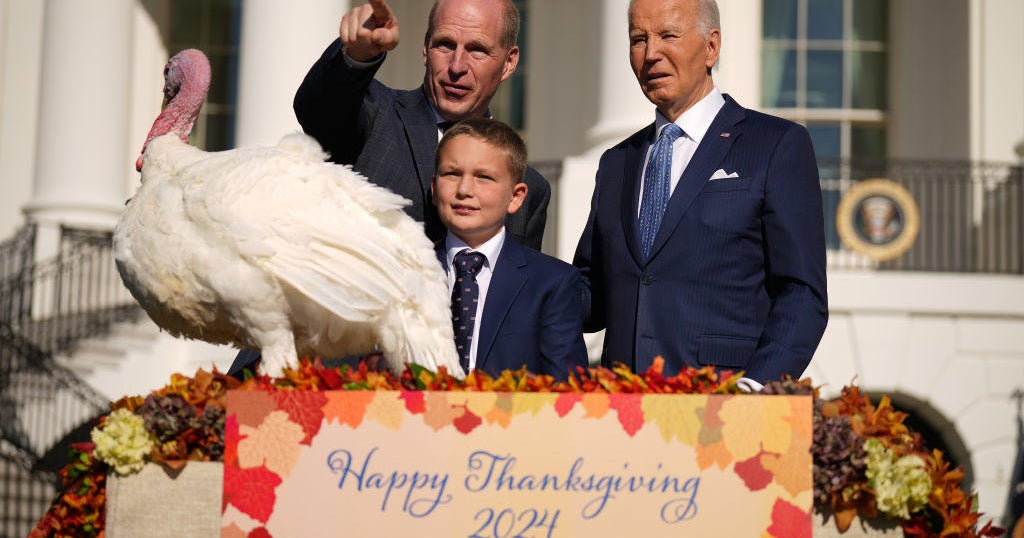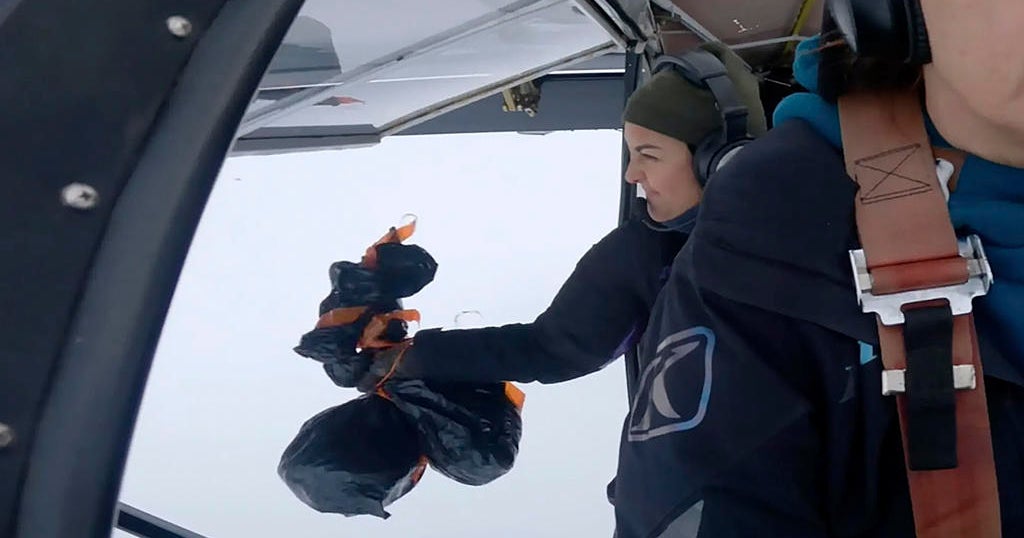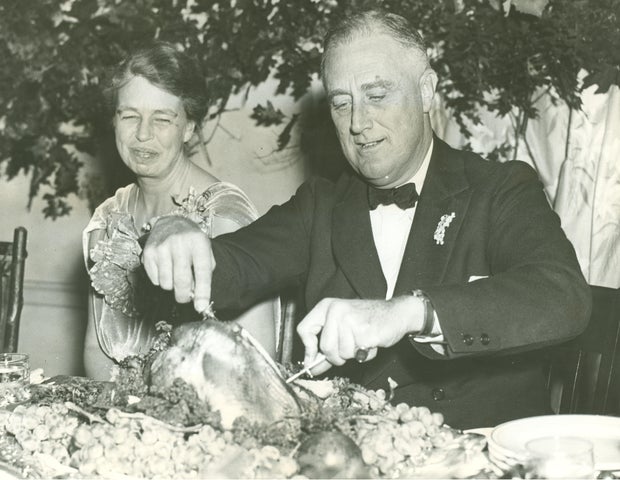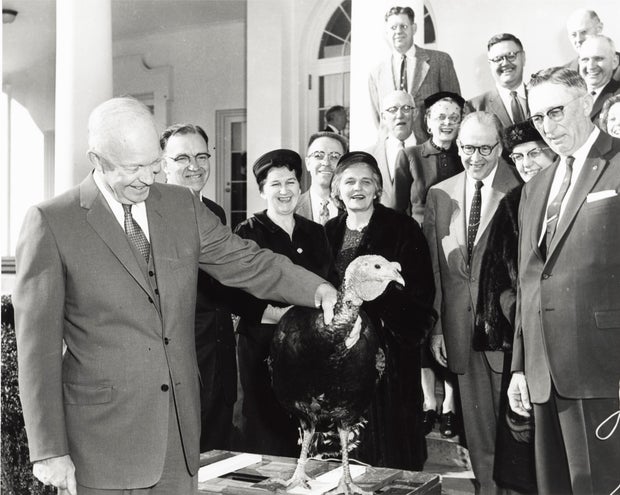CBS News
What is a long-term care insurance benefit period?

Getty Images
Medical innovation is an incredible thing. Thanks to recent advancements on the medical stage, people around the world are living longer now than ever before, according to the World Health Organization. That’s great news, but it does pose some challenges.
One of the most significant challenges posed by living longer is an increased risk of needing long-term care later in life. Unfortunately, that care can be expensive — typically costing tens, or even hundreds, of thousands of dollars per year. Many plan for that expense with long-term care insurance.
However, when you buy long-term care insurance, you’ll need to decide on the benefit period you want with your plan. But what exactly is a long-term care insurance benefit period and how do you decide on one?
Get long-term care insurance today to cover the costs of care in the future.
What is a long-term care insurance benefit period?
A long-term care insurance benefit period is the minimum amount of time your long-term care insurance provider will pay out benefits if a qualifying event takes place. However, you may receive benefits longer than your contracted benefit period.
“The average long-term care event is 2.7 years long,” says Lamar Brabham, CEO and founder of Noel Taylor Agency, a financial planning firm. “As a result, the normal long-term care policy offers three years of coverage. A standard long-term care policy has a duration period and a maximum daily benefit. Multiplying these numbers gives you the maximum benefit pool.”
“If, for instance, you have a $175 per day benefit, and your assisted living cost is $125 per day, the excess $50 per day will remain in the pool and can extend the duration beyond three years,” says Brabham.
Compare your long-term care insurance options.
Factors to consider when choosing a benefit period
When you purchase long-term care insurance, you can typically choose a benefit period ranging from two to five years. Some insurance providers offer longer — and even lifetime — benefit periods. So, what factors should you consider as you make your choice?
The average long-term care event
It’s important to consider how long the average person needs long-term care services. After all, there’s a high probability that your needs will be similar.
“According to the U.S. Department of Health & Human Services, the average long-term care need in the U.S. differs slightly between men (2.2 years) and women (3.7 years),” says Larry Nisenson, chief growth officer at Assured Allies, a financial planning firm focused on helping consumers age successfully. “This is of course dependent on the nature and severity of the underlying condition but is a good starting point.”
So, if you’re a man, it’s likely wise to purchase at least three years of coverage while women should consider purchasing at least four years of coverage.
Whether you’ll have family support
“Other considerations include whether formal care is needed or if family members are going to provide some level of unpaid support,” says Nisenson. After all, if your family is going to provide a substantial portion of your care, you may not need such a large pool of coverage.
On the other hand, some long-term care insurance providers may pay your family members to provide the care you need. So, consider whether or not your family will be involved in your care — and whether or not you intend for them to be paid to care for you — as you shop for your policy.
Your budget
“Affordability is always a consideration and generally the longer the benefit period, the more expensive a policy is,” Nisenson says. So, you’ll have to consider your budget as you decide how long your benefit period should be.
Explore your long-term care coverage options online today.
The bottom line
A long-term care insurance benefit period represents the minimum amount of time your insurance company will pay for the costs of your long-term care. Moreover, there are multiple factors to consider when determining how long your benefit period should be.
The good news is that you’re not alone in making your decision. “Fortunately, agents are adept at helping consumers determine the right type and amount of coverage based on” their unique needs, says Nisenson.
CBS News
The White House’s history with Thanksgiving, and how the turkey pardon came to be

The history of White House Thanksgiving traditions date back more than 160 years to President Abraham Lincoln, who established the national holiday.
During his time in office, Lincoln issued a proclamation calling for the celebration of Thanksgiving, triumphing over similar efforts of presidents who came before him, according to the National Park Service.
The official designation of the annual national holiday is due, in part, to writer Sarah Josepha Hale. The NPS notes that in 1827 — as editor of “Boston’s Ladies Magazine” — Hale began writing essays calling for the national holiday. Finally, on Sept. 18, 1863, she wrote to Lincoln asking him to use his presidential powers to create the holiday.
Lincoln obliged and a few weeks later, on Oct. 3, 1863 — during the height of the Civil War — he issued the Thanksgiving Proclamation. Ever since, the country has celebrated Thanksgiving Day.
But it wasn’t until after a bill passed by Congress on Dec. 26, 1941, that made the holiday fall annually on the fourth Thursday in November.
Thanksgiving at the White House is usually relatively quiet and includes the tradition of pardoning lucky turkeys from their doomed fate of the dinner table.
Franklin D. Roosevelt Presidential Library and Museum/NARA
Presidential turkey pardons
The first turkey pardon ever issued is believed to have been by Lincoln as recorded by White House reporter Noah Brooks in an 1865 dispatch, according to the White House Historical Association.
Lincoln had granted clemency to a turkey named Jack belonging to his son Tad Lincoln, that had originally been slated to be gobbled up at the family’s Christmas dinner in 1863.
Dwight D. Eisenhower Presidential Library and Museum/NARA
But the annual practice in which the White House sent pardoned presentation turkeys to a farm to live out their days did not occur until Ronald Reagan’s presidency in the 1980s, the WHHA says. In decades prior, presidents would occasionally receive turkeys from the poultry industry and decide not to eat them without an official pardon.
The WHHA notes the practice of sending presentation turkeys to the president became a norm in 1981, and the pardoning ceremonies quickly became a national sensation. By 1989, the annual tradition materialized with President George H.W. Bush — as documented by the association — speaking to the pardoned turkey, saying the line his successors still reprise at ceremonies today: “He’s granted a presidential pardon as of right now.”
George Bush Presidential Library and Museum/NARA
On Monday, President Biden issued the final two turkey pardons of his term, to Peach and Blossom, sending them to live out the rest of their lives at Minnesota’s Farmamerica as poultry ambassadors for agricultural students.
Getty Images
Gathering with family and friends
Aside from the turkey pardoning spectacle, presidents spend Thanksgiving in the same fashion as households across the country.
The first documented Thanksgiving gathering at the White House dates back to Nov. 28, 1878, according to the WHHA. Then-President Rutherford B. Hayes held a large Thanksgiving dinner gathering with his family and private secretaries, singing hymns in the Red Room afterward and inviting African-American staff to enjoy their own Thanksgiving meal in the State Dining Room.
The tradition has since withstood the test of time. Through economic hardship and times of wars, presidents have carved out time for family. The WHHA notes that President Woodrow Wilson’s first Thanksgiving meal during World War I on Nov. 29, 1917, was an economical one — and one without cranberries.
In recent decades, presidents have taken to the tradition of celebrating the holiday outside the White House at their so-called “go-to” vacation spots. President Ronald Reagan in 1985 traveled to the family ranch in Santa Barbara, California.
President-elect Donald Trump spent all but one Thanksgiving of his first term at his Mar-a-Lago estate in West Palm Beach, Florida. President Biden has spent every Thanksgiving during his term with family in Nantucket, Massachusetts as the Biden family has for over 40 years.
CBS News
Phishing campaigns target Black Friday shoppers. Here’s how to spot them.

Experts are warning that fraudsters are exploiting Black Friday sales to target U.S. shoppers with fake websites and ads for major brands like IKEA, Wayfair and The North Face, after online scams hit record highs in 2023.
A new report released by threat intelligence company EclecticIQ identified a campaign that operates a sprawling network of fabricated websites using “Trusted Store” badges to lure shoppers with fake products.
When consumers attempt to make a purchase, scammers steal their personal and payment information. The consumers are often unaware they were scammed until they fail to receive the product.
Reports of online fraud in 2023 exceeded $12.5 billion in potential losses — a 22% jump from 2022, according to FBI data. Officials say increasingly sophisticated scams are using tools including AI to power their campaigns.
“With the way it now seems like everyone is shopping online, reliance on digital platforms has handed these groups a wider attack surface than ever,” EclecticIQ CEO Cody Barrow told CBS News. “Unfortunately, it’s likely we’ll see its impact stretch into next week.”
The scams
EclecticIQ says it identified at least 8,000 fabricated sites that lure shoppers by offering steep “deals” on popular brands. The websites are not affiliated with the brands they appear to represent, but are designed to look like official sites and use URLs that appear authentic.
In one example, a site posing as Wayfair used the URL wayfairtoday.com. Another site used the URL wayfairblackfriday.com. The website was registered in early November and offered fake “deals” including an $800 mattress reduced to $39.
CBS Confirmed
CBS Confirmed
CBS News also found an ad appropriating Wayfair’s logo that directed users to another counterfeit site posing as the retailer. It was removed from Meta’s ad library as of Friday. Wayfair told CBS News that it is actively monitoring scams to ensure customers are protected.
Analysts discovered Mandarin coding and Chinese IP addresses on the sites, indicating that the phishing campaign was operated by a China-based group. IKEA told CBS News it was investigating one of the scam websites using its name that EclecticIQ identified.
Separately, an ad on Facebook and Instagram using The North Face logo routed users to a fabricated site. The ad was removed for policy violations, and The North Face told CBS News it was working with Meta and “other partners” to combat scam sites.
“Scammers use every online platform available to them and constantly evolve their tactics in order to evade enforcement,” said Meta spokesperson Erin Logan. “In this instance, our systems proactively detected and removed a number of these ads before they were reported to us.”
The Federal Trade Commission released data in February that shows online shopping fraud was the second most common type of fraud reported in 2023.
Experts say fraudulent sites and ads remain a pervasive issue. “Many of the scam sites are short-lived campaigns, so it’s an ongoing effort to identify new sites,” Ilya Volovik, director of Recorded Future Payment Fraud Intelligence, told CBS News. “Some of the longer living scam sites change their ‘sales’ advertisement based on a holiday.”
Tips to protect yourself
Cliff Steinhauer, director of Information Security and Engagement at the National Cybersecurity Alliance, said consumers should take precautions, stay alert when online shopping and act quickly if they believe they have been scammed.
Secure your accounts. Experts recommend setting up multifactor authentication as well as strong and unique passwords for all accounts, including shopping and bank sites.
Avoid unfamiliar links: Be wary of links from unsolicited emails and text messages. Instead, use a search engine to navigate to the retailer’s website.
Look for red flags. Be wary of deals that appear too good to be true, as well as websites that use excessive pop-ups and urgent language. If in doubt, leave the site.
Research the website. Look up reviews from other shoppers who have used the site. Visit the Better Business Bureau’s website, which maintains a database with ratings for millions of businesses.
If you think you have been the victim of fraud, immediately notify your bank to reverse the charges. You should also change the passwords to your online accounts. File a police report if you experience harassment or repeated attempts to steal more of your information.
Experts also recommend freezing your credit on the three major credit reporting bureaus if your personal information has been compromised through a data breach. This will ensure your identity can’t be stolen in the event that scammers obtain your social security number.
CBS News
Pilot in Alaska air drops turkeys for residents in remote homes who can’t run out to a grocery store

In the remotest reaches of Alaska, there’s no relying on DoorDash to have Thanksgiving dinner — or any dinner — delivered. But some residents living well off the grid nevertheless have turkeys this holiday, thanks to the Alaska Turkey Bomb.
For the third straight year, a resident named Esther Keim has been flying low and slow in a small plane over rural parts of south-central Alaska, dropping frozen turkeys to those who can’t simply run out to the grocery store.
Alaska is mostly wilderness, with only about 20% of it accessible by road. In winter, many who live in remote areas rely on small planes or snowmobiles to travel any distance, and frozen rivers can act as makeshift roads.
Alaska Gear Company via AP
When Keim was growing up on an Alaska homestead, a family friend would airdrop turkeys to her family and others nearby for the holidays. Other times, the pilot would deliver newspapers, sometimes with a pack of gum inside for Keim.
Her family moved to more urban Alaska nearly 25 years ago but still has the homestead. Using a small plane she had rebuilt with her father, Keim launched her turkey delivery mission a few years back after learning of a family living off the land nearby who had little for Thanksgiving dinner.
“They were telling me that a squirrel for dinner did not split very far between three people,” Keim recalled. “At that moment, I thought … ‘I’m going to airdrop them a turkey.'”
She decided not to stop there. Her effort has grown by word of mouth and by social media posts. This year, she’s delivering 32 frozen turkeys to people living year-round in cabins where there are no roads.
Mountain Mind Media/Alaska Gear Company via AP
All but two had been delivered by Tuesday, with delivery plans for the last two birds thwarted by Alaska’s unpredictable weather.
Among the beneficiaries are Dave and Christina Luce, who live on the Yentna River about 45 miles (72 kilometers) northwest of Anchorage. They have stunning mountain views in every direction, including North America’s tallest mountain, Denali, directly to the north. But in the winter it’s a 90-minute snowmobile ride to the nearest town, which they do about once a month.
“I’m 80 years old now, so we make fewer and fewer trips,” Dave Luce said. “The adventure has sort of gone out of it.”
They’ve known Keim since she was little. The 12-pound (5.44-kilogram) turkey she delivered will provide more than enough for them and a few neighbors.
“It makes a great Thanksgiving,” Dave Luce said. “She’s been a real sweetheart, and she’s been a real good friend.”
Keim makes 30 to 40 turkey deliveries yearly, flying as far as 100 miles (161 kilometers) from her base north of Anchorage toward Denali’s foothills.
Sometimes she enlists the help of a “turkey dropper” to ride along and toss the birds out. Other times, she’s the one dropping turkeys while her friend Heidi Hastings pilots her own plane.
Esther Keim via AP
Keim buys about 20 turkeys at a time, with the help of donations, usually by people reaching out to her through Facebook. She wraps them in plastic garbage bags and lets them sit in the bed of her pickup until she can arrange a flight.
“Luckily it’s cold in Alaska, so I don’t have to worry about freezers,” she said.
She contacts families on social media to let them know of impending deliveries, and then they buzz the house so the homeowners will come outside.
“We won’t drop the turkey until we see them come out of the house or the cabin, because if they don’t see it fall, they’re not going to know where to look,” she said.
It can be especially difficult to find the turkey if there’s deep snow. A turkey was once missing for five days before it was found, but the only casualty so far has been a lost ham, Keim said.
Keim prefers to drop the turkey on a frozen lake if possible so it’s easy to locate.
“As far as precision and hitting our target, I am definitely not the best aim,” she joked. “I’ve gotten better, but I have never hit a house, a building, person or dog.”
Her reward is the great responses she gets from families, some who record her dropping the turkeys and send her videos and texts of appreciation.
“They just think it’s so awesome that we throw these things out of the plane,” Keim said.
Ultimately, she hopes to set up a nonprofit organization to solicit more donations and reach people across a bigger swath of the state. And it doesn’t have to stop at turkeys.
“There’s so many kids out in the villages,” she said. “It would be cool to maybe add a stuffed animal or something they can hold.”












